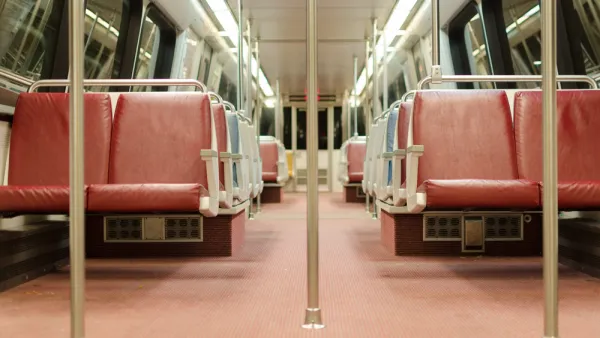Proof from the Census Bureau's latest American Community Survey on commuting by auto shows that millennials, if they live in cities, do indeed drive less. Census researcher Brian McKenzie describes the finding in the bureau's blog, Random Samplings.

The August 13 survey, "Who Drives to Work? Commuting by Automobile in the United States: 2013," and referenced here, has 28 pages (PDF) of data to pore over. However, a quick read can be found in Brian McKenzie's blog.
"Some of the most notable recent changes in commuting have occurred among younger workers, particularly those living in cities," writes McKenzie, also the author of the Census Bureau report.
- In 2013, about 74 percent of workers ages 16 to 24 living in principal cities commuted by automobile, compared with about 80 percent of the oldest workers.
- Workers between the ages of 25 and 29 living in principal cities showed the largest auto commuting declines since 2006, at about 4 percentage points. [See interpretation by Emily Badger below]. This is also the group that was least likely to have a vehicle at home in 2013.
By one definition, "the Millennial cohort consist(s) of individuals born between 1982 and 2004. Google defines a millennial as "a person reaching young adulthood around the year 2000; a Generation Yer."
For more data, go to the survey, page 6: DIFFERENCES IN AUTOMOBILE COMMUTING BY AGE (PDF)
Rapidly evolving transportation options and changing demographics across communities raise several questions about current and future travel patterns. Young people show some deviation from several long-standing travel-related indicators, including higher rates of commuting by travel modes other than private vehicles... To what extent these deviations may become a sustained pattern remains unclear.
McKenzie's work is meticulously footnoted, including references to a U.S. PIRG report posted here.
Writing in The Washington Post Wonkblog, Emily Badger emphasizes that the decline in auto commuting among millennials applies to those "who live in the principle city of each metropolitan area — so, not the suburbs."
A four-point decline [see second bullet above] may not sound like much (it means about 76.7 percent of these young urban workers still commute by car). But since 2006, the rate of their decline in driving is about four times greater than the national average. And, as the [below] chart shows, changes in commuting patterns happen gradually over many years.
Census Bureau: Figure 3, Random Samplings
FULL STORY: Majority of Americans Drive to Work, But Less so for Urban Millennials

National Parks Layoffs Will Cause Communities to Lose Billions
Thousands of essential park workers were laid off this week, just before the busy spring break season.

Retro-silient?: America’s First “Eco-burb,” The Woodlands Turns 50
A master-planned community north of Houston offers lessons on green infrastructure and resilient design, but falls short of its founder’s lofty affordability and walkability goals.

Delivering for America Plan Will Downgrade Mail Service in at Least 49.5 Percent of Zip Codes
Republican and Democrat lawmakers criticize the plan for its disproportionate negative impact on rural communities.

Test News Post 1
This is a summary

Test News Headline 46
Test for the image on the front page.

Balancing Bombs and Butterflies: How the National Guard Protects a Rare Species
The National Guard at Fort Indiantown Gap uses GIS technology and land management strategies to balance military training with conservation efforts, ensuring the survival of the rare eastern regal fritillary butterfly.
Urban Design for Planners 1: Software Tools
This six-course series explores essential urban design concepts using open source software and equips planners with the tools they need to participate fully in the urban design process.
Planning for Universal Design
Learn the tools for implementing Universal Design in planning regulations.
EMC Planning Group, Inc.
Planetizen
Planetizen
Mpact (formerly Rail~Volution)
Great Falls Development Authority, Inc.
HUDs Office of Policy Development and Research
NYU Wagner Graduate School of Public Service





























